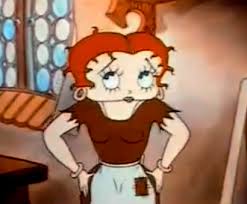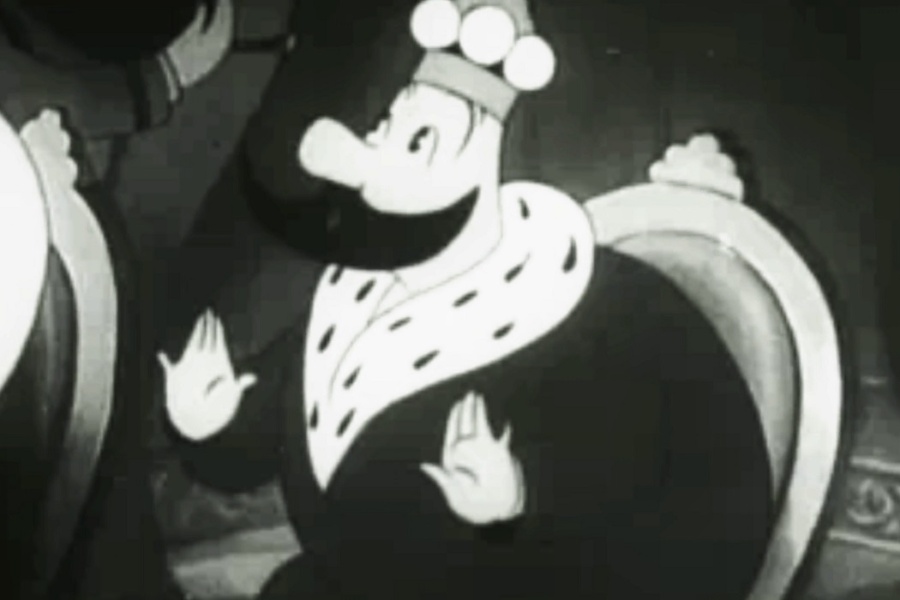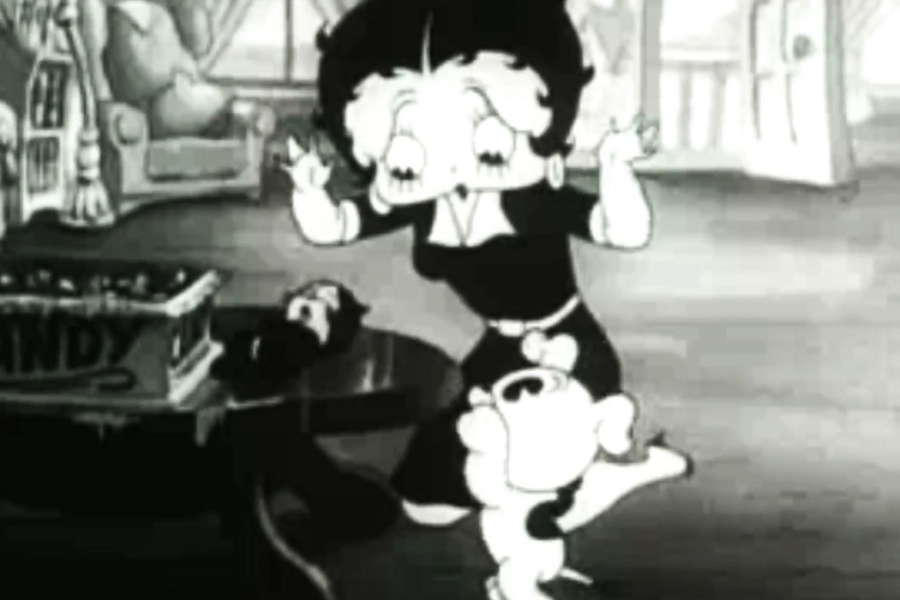
Cinderella (portrayed by Betty Boop) is a poor young woman forced to be the virtual slave of her two ugly stepsisters, who demand she prepare them for the prince’s ball while she is left at home to lament her spinsterdom, singing that no one loves her and that her only respite is her dreams, but she holds out hope of being a real princess someday.
Cinderella is visited by her fairy godmother, who grants her wish to attend the prince’s ball, giving her beautiful clothes, a carriage, and the traditional glass slippers, with the warning that she must leave by midnight before the spell expires.
During the ball, Prince Charming, provoked by a mallet-wielding Cupid, descends the staircase in royal fashion and is instantly smitten by Cinderella. The two have a wonderful time dancing together, but when midnight strikes, she rushes out of the ball, leaving behind her shoe. The prince proclaims that whoever can fit her foot into the shoe shall be his wife; all the maidens in the land line up to try, with none in the queue able to fit until Cinderella arrives and fits into the shoe easily. The two are married, and the ugly stepsisters are left to argue with each other until the end title’s doors smack their heads together.
Poor Cinderella was Fleischer Studio’s first color film, and the only appearance of Betty Boop in color during the Fleischer era. It is the final animated short presented by Max Fleischer and at Fleischer Studios, and the first Paramount Picture series animated short in color.



